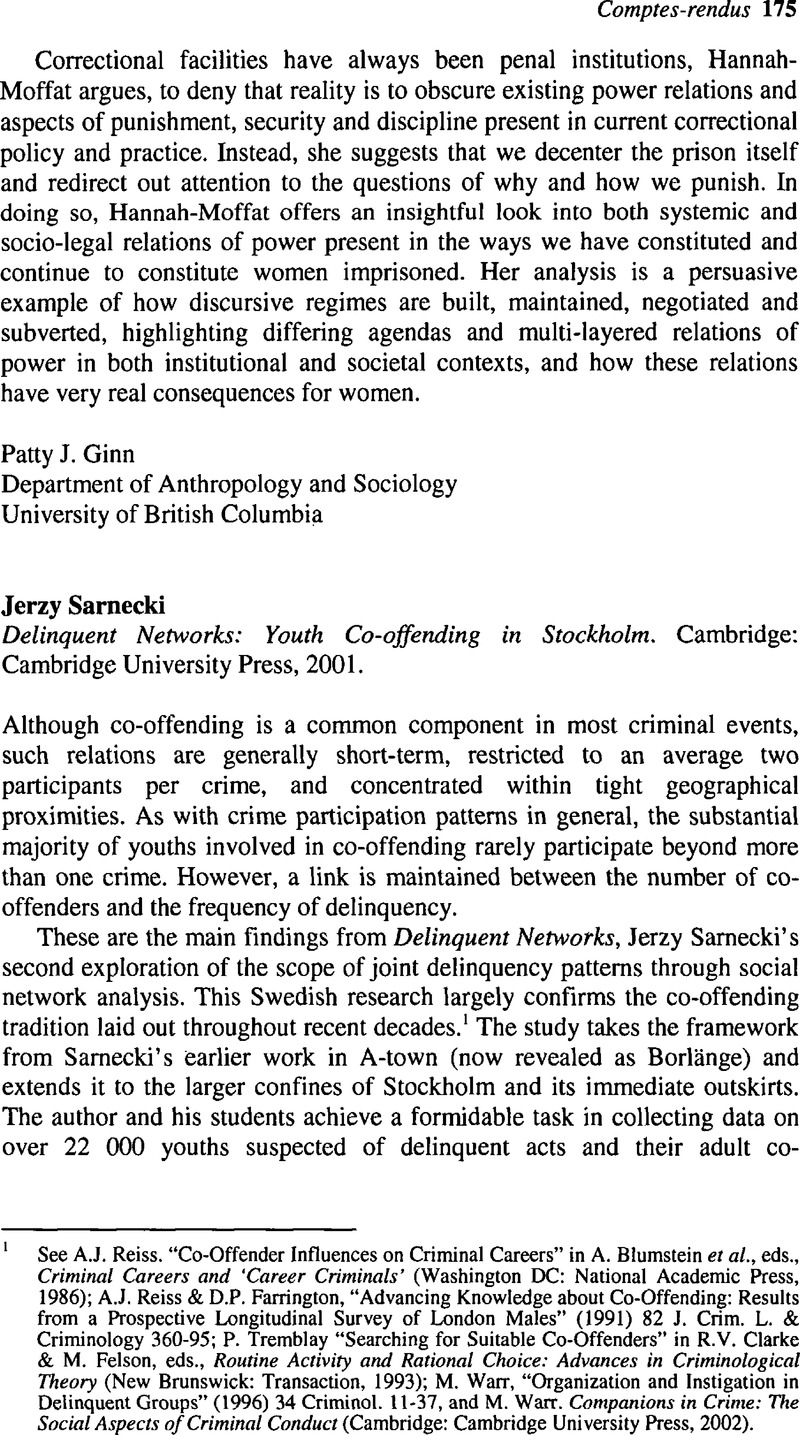No CrossRef data available.
Article contents
Jerzy Sarnecki, Delinquent Networks: Youth Co-offending in Stockholm. Cambridge: Cambridge University Press, 2001.
Published online by Cambridge University Press: 18 July 2014
Abstract

- Type
- Book Reviews/Comptes-rendus
- Information
- Canadian Journal of Law and Society / La Revue Canadienne Droit et Société , Volume 18 , Issue 2 , August 2003 , pp. 175 - 178
- Copyright
- Copyright © Canadian Law and Society Association 2003
References
1 See Reiss, A.J.. “Co-Offender Influences on Criminal Careers” in Blumstein, A. et al. , eds., Criminal Careers and ‘Career Criminals’ (Washington DC: National Academic Press, 1986)Google Scholar; Reiss, A.J. & Farrington, D.P., “Advancing Knowledge about Co-Offending: Results from a Prospective Longitudinal Survey of London Males” (1991) 82 J. Crim. L. & Criminology 360–95CrossRefGoogle Scholar; Tremblay, P. “Searching for Suitable Co-Offenders” in Clarke, R.V. & Felson, M., eds., Routine Activity and Rational Choice: Advances in Criminological Theory (New Brunswick: Transaction, 1993)Google Scholar; Warr, M., “Organization and Instigation in Delinquent Groups” (1996) 34 Criminol. 11–37CrossRefGoogle Scholar, and Warr, M.. Companions in Crime: The Social Aspects of Criminal Conduct (Cambridge: Cambridge University Press, 2002).CrossRefGoogle Scholar
2 Felson, M.. ‘The Process of Co-offending” in Crime Prevention Studies, 2003.Google Scholar
3 A few years ago, I attended a workshop organized by Barry Wellman at an International Network for Social Network Analysis (INSNA) conference. Wellman's advice relates directly to Sarnecki's study and should be taken into consideration by all applying the many facets of social network methods to criminological matters. The advice is indeed sound: “We work with matrices, we visualize with graphs. To understand social networks, we must master both”.


